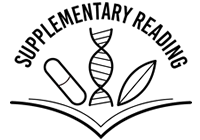Stinging Nettle
Also known as: Urtica dioica, Urtica urens
Safety Rating
|
LIKELY HARMFUL
|
|
NOT ENOUGH INFO
|
|
POSSIBLY UNSAFE
|
|
POSSIBLY SAFE (See dose safety below)
|
|
LIKELY SAFE
|
For explanations of what these safety ratings mean, click here.
Dose Safety
Several small studies using very different preparations, amounts, and mixtures of Stinging Nettle, with one study using 120mg 3 times a day for 2 years
Potential Side effects
Allergic rhinitis
Constipation
Diarrhea
Fatigue
Fever
Headache
Overview
What is it? A plant that grows in many regions. The root and leaves are used for medicinal purposes.
Why is it used? Stinging nettle is commonly found in products marketed to address high blood sugar, joint pain, urination issues, and astringent products.
What’s the harm? LIKELY UNSAFE in pregnancy because if may cause uterine stimulation, which may lead to miscarriage.
Interactions with health conditions
Diabetes: May increase the risk of Hypoglycemia (low blood sugar) when combined with medications meant to control blood sugar
Drug Interactions
Diabetes/blood sugar control: Stinging Nettle may increase the risk of Hypoglycemia (low blood sugar) when combined with Diabetes drugs. Examples include:
- Metformin
- Glipizide (Glucotrol)
- Insulin
- Pioglitazone (Actos)
- Liraglutide (Victoza)
- Canagliflozin (Invokana)
- Sitagliptin (Januvia)
For more examples of diabetes drugs, click here.
Lithium: Taking with Stinging Nettle may increase the levels of Lithium in the body. In order to avoid Lithium toxicity, the dose of Lithium may need to be lowered.
Warfarin: Warfarin prevents clots by countering the clotting effects of Vitamin K. Because Stinging Nettle contains large amounts of Vitamin K, it could reduce efficacy of warfarin if taken together.
Interactions with herbs/supplements
Blood sugar-lowering products: Combining with products that may lower blood sugar increases the risk of hypoglycemia (extremely low blood sugar). Examples:
Interactions with foods: None Known
Interactions with lab tests: None Known
References
- *Natural Medicines. (2019, March 11). Stinging Nettle [Monograph]. Natural Standard Professional Monograph. Retrieved from: https://naturalmedicines.therapeuticresearch.com/databases/food,-herbs-supplements/professional.aspx?productid=664
- * Lopatkin, N., Sivkov, A., Walther, C., Schläfke, S., Medvedev, A., Avdeichuk, J., ... & Engelmann, U. (2005). Long-term efficacy and safety of a combination of sabal and urtica extract for lower urinary tract symptoms—a placebo-controlled, double-blind, multicenter trial. World journal of urology, 23(2), 139-146. Retrieved from: https://link.springer.com/article/10.1007/s00345-005-0501-9
*=Requires PAID or institutional subscription to access
Tags: Ingredients
